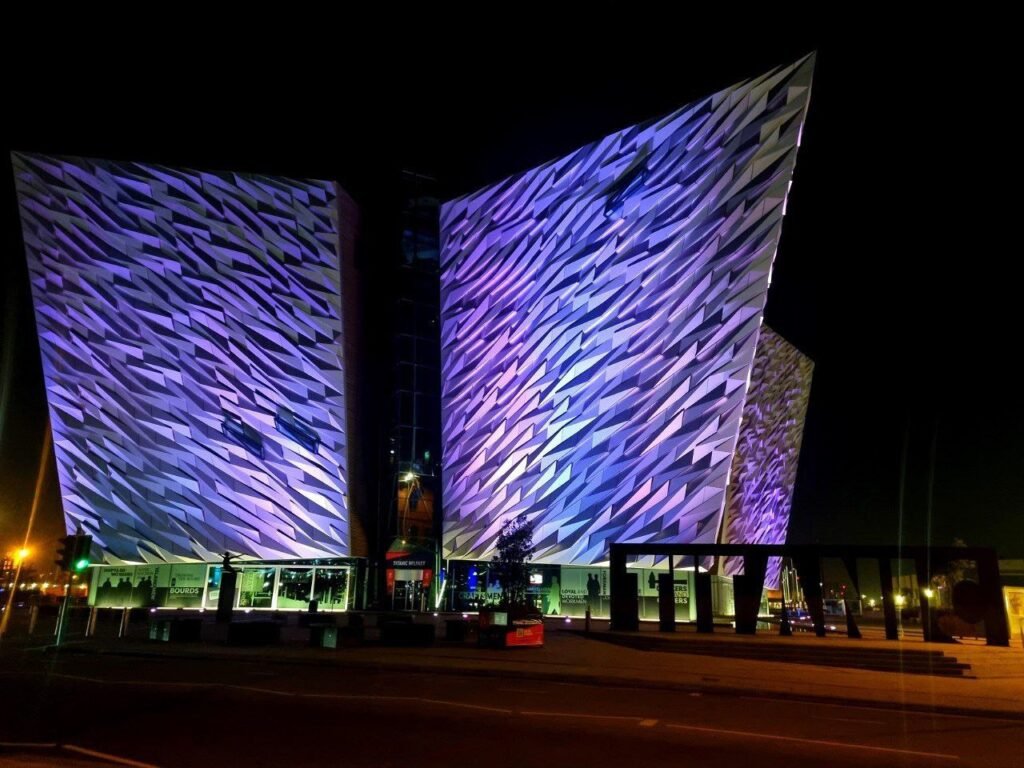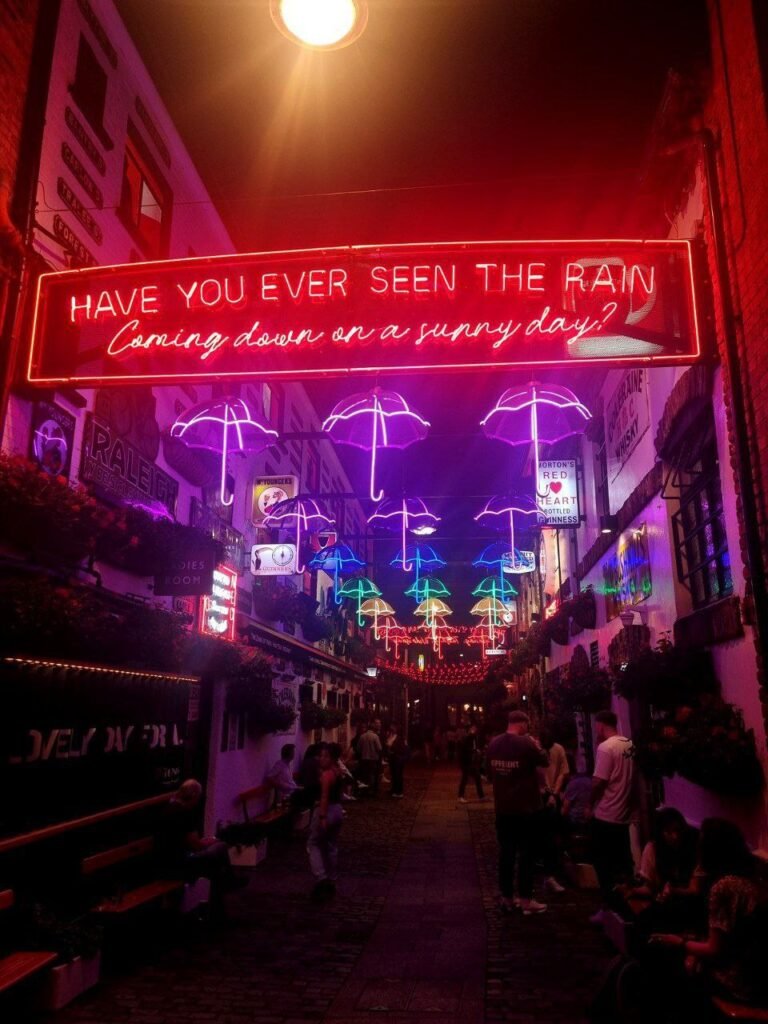Cities reveal themselves most honestly during moments of collective celebration. This past weekend, I discovered Belfast in precisely such a state of joyful self-expression during Culture Night—an annual September event that transforms the city’s streets into an expansive, democratic canvas for artistic expression of all forms.
I stumbled upon this festival entirely by accident. Having spent the morning in the Linen Hall Library researching Northern Irish poetry, I emerged in late afternoon to find the Cathedral Quarter buzzing with unexpected energy. Streets normally dedicated to traffic had been reclaimed by pedestrians. Temporary stages appeared at intersections. Building facades became projection screens for digital art. The air vibrated with competing soundscapes—a string quartet on one corner, experimental electronic music on another, traditional Irish folk songs drifting from a nearby pub.
What strikes me most about Culture Night is its radical accessibility. No tickets, no formal invitations, no boundaries between performer and audience. Art spills beyond conventional venues into streets, alleyways, parking lots, and unused storefronts. This deliberate dissolution of traditional cultural containers—the galleries, theaters, and concert halls that simultaneously elevate and isolate artistic expression—creates an atmosphere where creative engagement feels as natural and necessary as breathing.
A small crowd gathered around a woman painting a mural on the side of a previously blank wall. Her canvas depicted Belfast itself, but reimagined as a fantastical cityscape where industrial cranes transformed into mechanical birds, shipyard structures bloomed with vegetation, and the famous Harland & Wolff yellow cranes stretched toward each other like lovers. The artist worked swiftly, her movements confident and precise, carrying on despite occasional rain showers. What fascinated me was not just the work itself but the public nature of its creation—art as process rather than merely finished product, the city actively witnessing its own transformation.
Nearby, a poetry slam unfolded on a makeshift stage. Young poets, most appearing to be in their twenties, delivered verses that oscillated between personal confession and political critique, between whispered intimacy and shouted defiance. One young woman performed a poem about her grandmother’s memories of the Troubles, interweaving historical trauma with contemporary identity politics. A young man offered a scathing critique of economic inequality disguised as a love letter to the city. Each performance elicited supportive snaps and murmurs of recognition from the audience.
Listening to these poets, I found myself thinking about my own early poem “I Want to Tell You a Secret…” and its similar attempt to balance personal voice with social critique:
I’ll share a secret, hush and hear,
How sick your rotten ways appear:
Where honor’s sold for scraps of gold,
And life is bartered, souls are told.You tear the earth in greedy packs,
Choke down on metal, flame attacks;
You trample forests, crush each shoot
Beneath your vile, corrupting boot.Upstart tyrants claw for gain,
Draining all the good we strain;
You smear your finger, slick and red
In blood of creatures left for dead…
My poem, like the work of these Belfast poets, emerges from that essential tension between bearing witness to systemic violence while maintaining individual voice, between condemnation of injustice and affirmation of human dignity. What I hear in these young Northern Irish voices is a continued commitment to poetry as a form of necessary truth-telling, a refusal to separate aesthetic concerns from ethical ones.
As evening deepened, I found myself drawn to a warehouse space where an experimental theater company performed a wordless piece involving elaborate puppets, projected shadows, and percussive sound. The narrative, so far as I could discern, concerned the relationship between industrial labor and physical toll—bodies transformed and sometimes broken by the demands of production. This exploration of Belfast’s shipbuilding heritage through abstract movement and visual poetry offered yet another mode of confronting history without simplifying its complexities.
Walking through the crowded streets between performances, I overheard fragments of conversation in multiple languages, evidence of Belfast’s increasingly diverse population. A group of teenagers practiced breakdancing moves beside a Victorian monument. An elderly couple demonstrated traditional Irish dance steps to curious onlookers. A chef offered free samples of fusion cuisine from a pop-up stand. This convergence of ages, traditions, and cultures suggested a city actively negotiating its identity, neither forgetting its past nor remaining imprisoned within it.
What connects all these varied expressions—from street art to poetry to experimental theater—is a spirit of creative rebellion against limitation, against the idea that art belongs only in designated spaces or to certain populations. The people filling Belfast’s streets were using creativity not as mere entertainment but as a form of active citizenship, a way of claiming voice and visibility in the public sphere.

In my own poem’s rebellion against systems of power, I see echoes of what these Belfast artists accomplish through their work—a refusal to accept the world as given, an insistence on imagining alternatives. The young muralist transforming an empty wall, the poets reshaping language to accommodate difficult truths, the performers using bodies and shadows to tell stories conventional narrative cannot contain—all engage in acts of creative resistance that feel deeply necessary in our current moment.
As I prepare to leave Belfast tomorrow, I carry with me this vision of art as essential public discourse, as collective imagination made visible in shared space. Culture Night offers a glimpse of what cities can be when creativity is understood not as luxury or distraction but as vital social practice, as necessary to community well-being as any other public service.
“Art is not a mirror held up to reality, but a hammer with which to shape it.” (This adaptation of Brecht’s famous observation seems particularly apt after witnessing Belfast’s streets transformed by creative intervention)
— Anastasia
